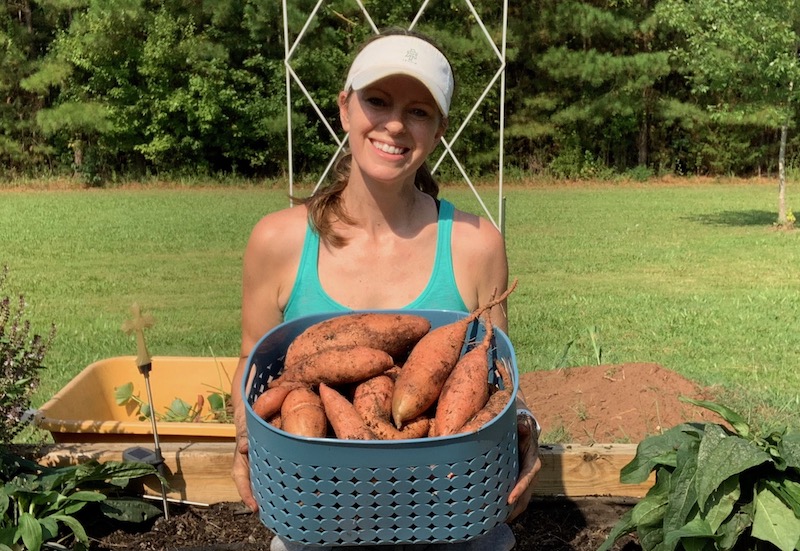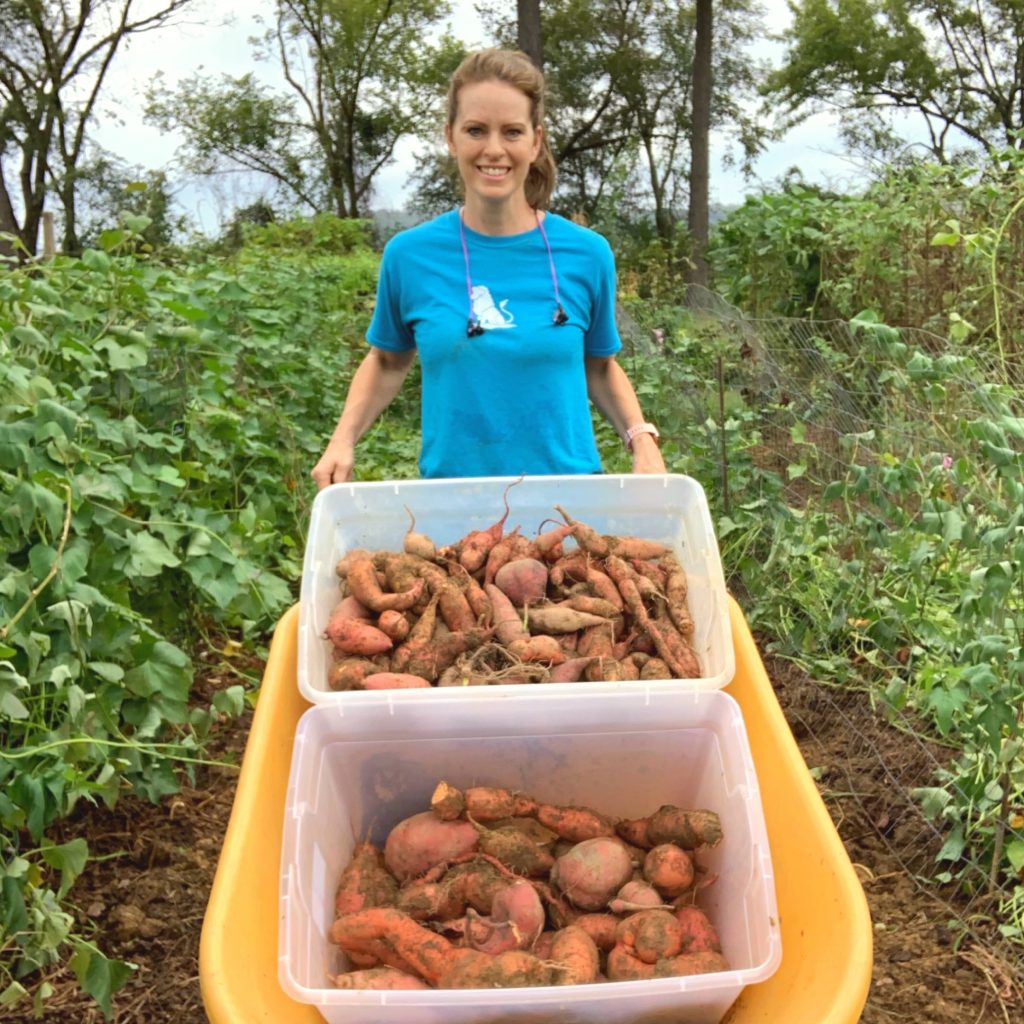Comparing Sweet Potato Harvests in Different Garden Beds
Do you want to grow sweet potatoes but can’t decide whether to grow them in a ground bed, raised bed, or a container? Or maybe your space is limited and you’re wondering if growing them in a raised bed or container is even possible. In 2020, I grew sweet potatoes in all three methods, and I’m glad to say that any of these options is possible!
But first, let’s start at the beginning of my sweet potato journey.
In 2019 I planted my very first sweet potatoes and had the best harvest I could have ever imagined! In just one 4×28′ planting area, I harvested close to one hundred pounds! I wondered if I’d had beginner’s luck as I began to plan for my garden in 2020 or if I could reasonably expect that 100lbs would be the norm.
I also wanted to compare different growing methods, as mentioned earlier. Would one yield better than another? Would one prove to be less labor than another?
In the article below, I share my comparisons, observations, and ultimate yield of each method, but if you want to catch the video, which has more detail to my harvest and curing process, check out the video here:
Raised Beds
For all of the sweet potatoes I planted in 2020, I used slips from my harvest from 2019. (Here’s how to start your own sweet potato slips.) I planted 5 of those slips in my raised bed. The plants grew quickly and completely overtook the bed.
I harvested the raised beds at the end of August, right when they were starting to flower, which is a little bit early, but I needed the space for fall crops in my raised bed. Did it pay off? I’ll say! Five slips provided me 22lbs of sweet potatoes!

As you saw in the video above, a perk of the raised beds was that they were much easier to harvest than the ones in the ground, but still, not near as easy to pull up as regular potatoes! Sweet potatoes really burrow down in the soil, so you’ve got to use a little extra muscle when harvesting.
Grow Bags
When I ended up with more sweet potato slips than I could plant in the garden ground or raised beds, I threw a few slips into grow bags.
I didn’t fertilize them, and honestly, I didn’t do much else, either. They didn’t flower, which was a little strange and I noticed that there was some insect damage on them. As you can probably guess, the expectations were pretty low.
I ended up with a small harvest, but I’ll take it considering I didn’t do anything special to these. But what I learned was that it IS possible to grow sweet potatoes in grow bags. If I did it again, I’d pay more close attention to the soil fertility; I’d water more, and I’d only grow two slips in my 7-gallon grow bags.

In-Ground
I planted two 28-foot rows in my garden like I did in 2019. I did plant in a different place in my garden, and unfortunately, it’s a spot that doesn’t produce as well as the rest of my garden. Last year I had mulched with hay that ended up being contaminated with herbicide, so I knew going in that it was not an ideal spot in general. Because of that, I wasn’t expecting as large of a harvest as in the same space in 2019.
But, all those obstacles aside, we were still able to harvest, 48lbs of sweet potatoes.
I think there are a few factors that played a part in my harvest. I noticed that on the side of the garden where we have volunteer marigolds, the sweet potatoes are much smaller than the side of the garden where we don’t. (Did the marigolds have a negative effect on the sweet potatoes? I’m not sure, but it was an observation.)
We also planted on the side of the garden with lower elevation, causing more water to collect. This is a possibility that could have factored in on the reasons for a smaller harvest as well.

It’s hard to say what precisely caused a 50% reduction in harvest from one season to the next, but I was still thrilled with almost fifty pounds of sweet potatoes.
Curing and Harvesting Sweet Potatoes
Whether you grow sweet potatoes in ground beds, raised beds, or containers, it’s important to cure your sweet potatoes after harvesting. Curing (allowing them to sit for a period of time in ideal conditions) allows the starches to turn to sugar, ensuring your sweet potatoes taste delicious and last as long as possible. My cured sweet potatoes have stored for about 9 months in a garage.
If there are any minor blemishes like injury from harvesting, these will usually be taken care of during the curing process. The key to curing is temperature and humidity. They need to be cured in a sheltered, hot, and humid environment for 2-4 weeks. The ideal temperature is 85-90 degrees with 85% humidity. In my Arkansas climate, this isn’t hard! But if you harvest later in the fall, you might want to move your sweet potatoes to a bathroom or another area with high humidity.

I hope you feel inspired to try your hand at sweet potatoes in your garden for the first time — no matter whether you decide to plant in raised beds, ground beds, or containers. To get started on planting sweet potatoes, check out this article.
Do you get overwhelmed with garden planning?

Subscribe here for my best tips to plan your garden in just 7 days -- all for FREE.
Plus, I'll send you my "In the Garden E-mail" on Fridays, periodic updates on garden resources relevant to you, and you'll receive access to my entire bank of free garden downloads!
You are also agreeing to our privacy policy.

